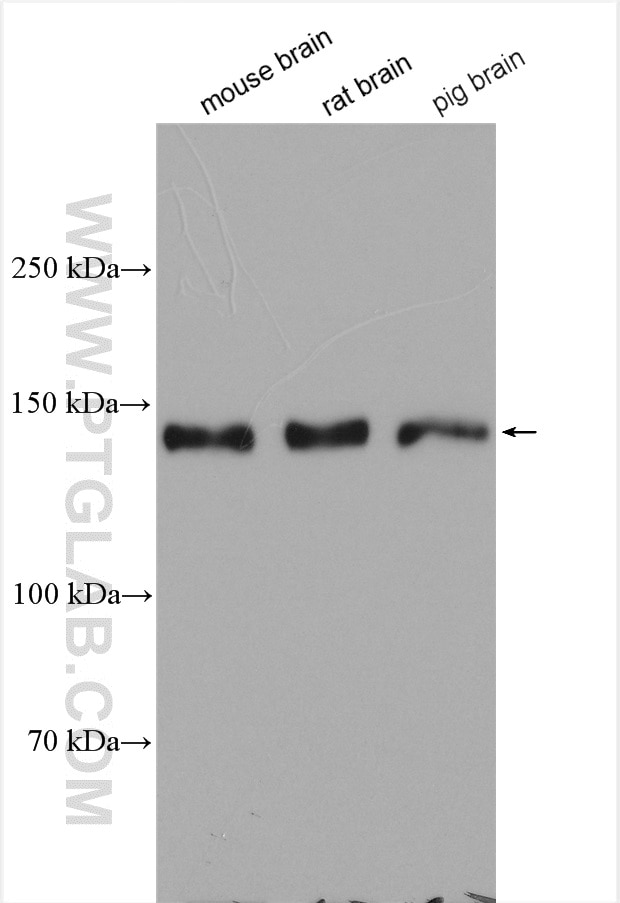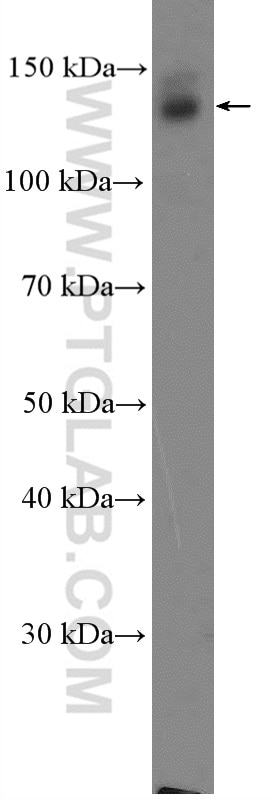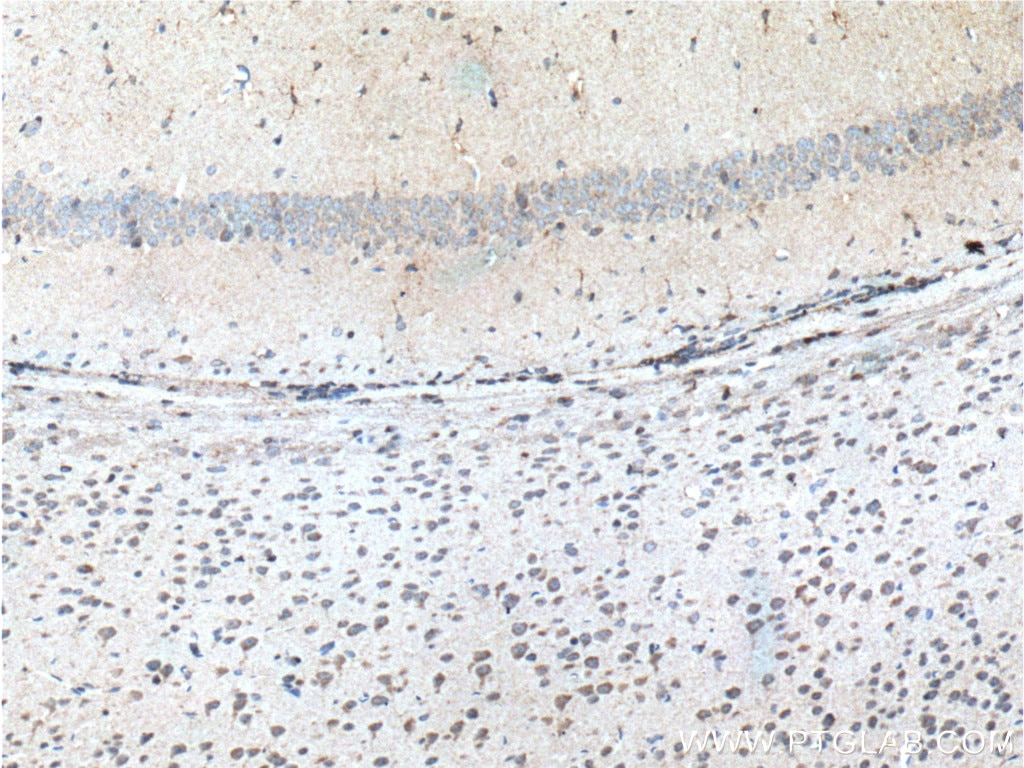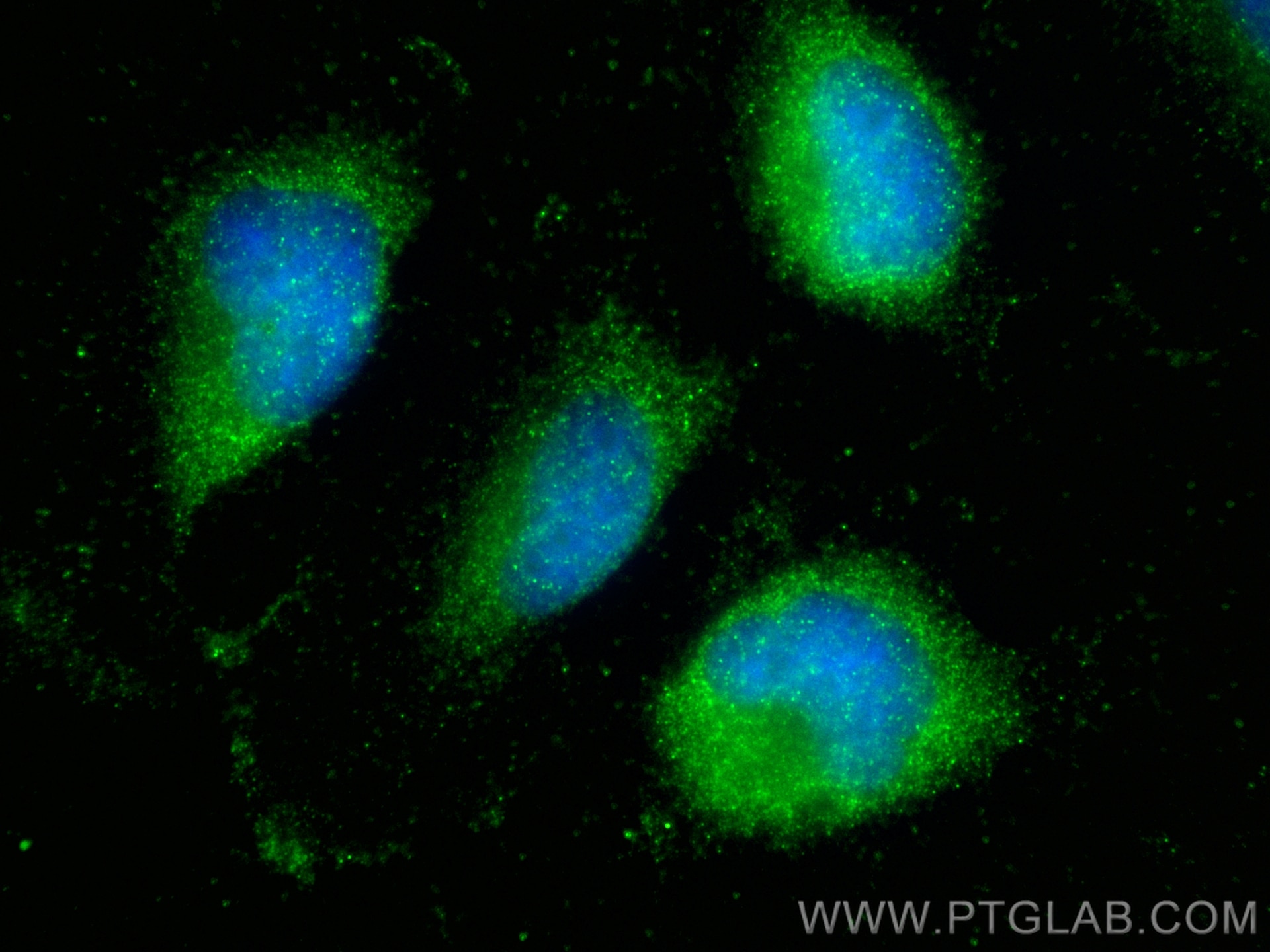Anticorps Polyclonal de lapin anti-SYNGAP1
SYNGAP1 Polyclonal Antibody for WB, IHC, IF/ICC, IP, ELISA
Hôte / Isotype
Lapin / IgG
Réactivité testée
Humain, porc, rat, souris
Applications
WB, IHC, IF/ICC, IP, ELISA
Conjugaison
Non conjugué
N° de cat : 19739-1-AP
Synonymes
Galerie de données de validation
Applications testées
| Résultats positifs en WB | tissu cérébral de souris, tissus cérébraux de porc, tissus cérébraux de rat |
| Résultats positifs en IP | tissu cérébral de souris, |
| Résultats positifs en IHC | tissu cérébral de souris il est suggéré de démasquer l'antigène avec un tampon de TE buffer pH 9.0; (*) À défaut, 'le démasquage de l'antigène peut être 'effectué avec un tampon citrate pH 6,0. |
| Résultats positifs en IF/ICC | cellules U-251, |
Dilution recommandée
| Application | Dilution |
|---|---|
| Western Blot (WB) | WB : 1:1000-1:4000 |
| Immunoprécipitation (IP) | IP : 0.5-4.0 ug for 1.0-3.0 mg of total protein lysate |
| Immunohistochimie (IHC) | IHC : 1:50-1:500 |
| Immunofluorescence (IF)/ICC | IF/ICC : 1:50-1:500 |
| It is recommended that this reagent should be titrated in each testing system to obtain optimal results. | |
| Sample-dependent, check data in validation data gallery | |
Applications publiées
| WB | See 7 publications below |
| IHC | See 1 publications below |
Informations sur le produit
19739-1-AP cible SYNGAP1 dans les applications de WB, IHC, IF/ICC, IP, ELISA et montre une réactivité avec des échantillons Humain, porc, rat, souris
| Réactivité | Humain, porc, rat, souris |
| Réactivité citée | Humain, souris |
| Hôte / Isotype | Lapin / IgG |
| Clonalité | Polyclonal |
| Type | Anticorps |
| Immunogène | Peptide |
| Nom complet | synaptic Ras GTPase activating protein 1 homolog (rat) |
| Masse moléculaire calculée | 1343 aa, 148 kDa |
| Poids moléculaire observé | 148 kDa |
| Numéro d’acquisition GenBank | NM_006772 |
| Symbole du gène | SYNGAP1 |
| Identification du gène (NCBI) | 8831 |
| Conjugaison | Non conjugué |
| Forme | Liquide |
| Méthode de purification | Purification par affinité contre l'antigène |
| Tampon de stockage | PBS with 0.02% sodium azide and 50% glycerol |
| Conditions de stockage | Stocker à -20°C. Stable pendant un an après l'expédition. L'aliquotage n'est pas nécessaire pour le stockage à -20oC Les 20ul contiennent 0,1% de BSA. |
Informations générales
SYNGAP1, also named as KIAA1938, is the major constituent of the PSD essential for postsynaptic signaling. It's an inhibitory regulator of the Ras-cAMP pathway. SYNGAP1 is a member of the NMDAR signaling complex in excitatory synapses, it may play a role in NMDAR-dependent control of AMPAR potentiation, AMPAR membrane trafficking and synaptic plasticity. SYNGAP1 regulates AMPAR-mediated miniature excitatory postsynaptic currents. SYNGAP1 may be involved in certain forms of brain injury, leading to long-term learning and memory deficits Defects in SYNGAP1 are the cause of mental retardation autosomal dominant type 5 (MRD5).
Protocole
| Product Specific Protocols | |
|---|---|
| WB protocol for SYNGAP1 antibody 19739-1-AP | Download protocol |
| IHC protocol for SYNGAP1 antibody 19739-1-AP | Download protocol |
| IF protocol for SYNGAP1 antibody 19739-1-AP | Download protocol |
| IP protocol for SYNGAP1 antibody 19739-1-AP | Download protocol |
| Standard Protocols | |
|---|---|
| Click here to view our Standard Protocols |
Publications
| Species | Application | Title |
|---|---|---|
Front Aging Neurosci Impaired Learning and Memory Ability Induced by a Bilaterally Hippocampal Injection of Streptozotocin in Mice: Involved With the Adaptive Changes of Synaptic Plasticity. | ||
Neurochem Int Resveratrol ameliorates learning and memory impairments induced by bilateral hippocampal injection of streptozotocin in mice. | ||
Eur J Neurosci SynGAP is expressed in the murine suprachiasmatic nucleus and regulates circadian-gated locomotor activity and light-entrainment capacity. | ||
Neuroscience Further Studies on the Role of BTBD9 in the Cerebellum, Sleep-like Behaviors and the Restless Legs Syndrome | ||
J Nutr Biochem Hippocampal proteomic changes in high-fat diet-induced obese mice associated with memory decline |







